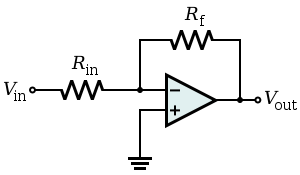Quoteone of the more curious "features" is that the gain of the OP stage is a sensitive function of the volume control position.
Well... It is an inverting amp so the gain is basically defined as Rf / Rin.

Needless to say, Rin in this particular design isn't constant but depends mainly on potentiometer's setting. With volume up all the way Rin is - in theory - zero and the gain jumps through the roof. I'm not surprised that the amp also becomes somewhat unstable at that point.
QuoteRed Circuits are TERRIBLE , and that's being too kind.
This man speaks the truth. Crappy, inreliable, unstable and dangerous designs that seem to require a complete redesign and rebuild to offer even mediocre performance. IMO, they are not worth the time to get them "fixed".


